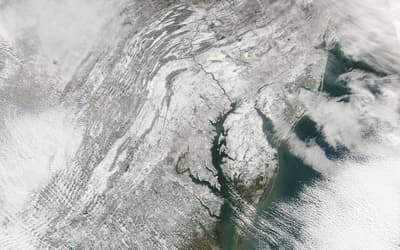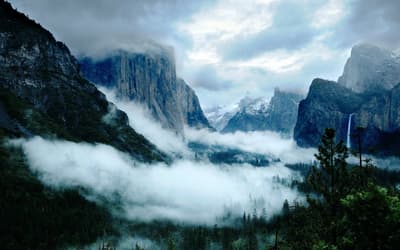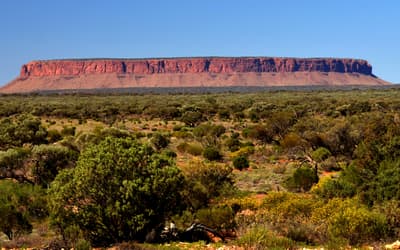Professional, peer-reviewed papers about the Ice Age from the perspective of a recent creation and global Flood within a biblical framework.

Chronological Framework of Ancient History: Parts 1–5. Reply
Kenneth C. Griffith , et. al. • Oct. 2, 2024
The authors of the series, “Chronological Framework of Ancient History” respond to critiques.

Chronological Framework of Ancient History. Papers 1–5. Comments
Eric J. Tweedy • Oct. 2, 2024
The author calls some of the conclusions in an earlier series, “Chronological Framework of Ancient History,” into question.

Chronological Framework of Ancient History. Papers 1–5: Response
Kenneth C. Griffith , et. al. • Aug. 7, 2024
Griffith and White respond to Habermehl’s criticisms by demonstrating a model that integrates geological, archaeological, and historical records with the Ussher-Jones Chronology.

Chronological Framework of Ancient History. Papers 1–5: Comments
Anne Habermehl • Aug. 7, 2024
Anne Habermehl claims that the Griffith and White’s series, Chronological Framework of Ancient History, reinforces the longer Septuagint timeline.

Remembering Spillover Erosion of Grand Canyon
Dr. Steve Austin , et. al. • Sept. 9, 2020
We should remember an important fact—creationist and evolutionist thinking about spillover continues to make a significant contribution to our understanding of erosion of Grand Canyon.

Heat Problems Associated with Genesis Flood Models—Part 2: Secondary Temperature Indicators
William Worraker • Sept. 18, 2019
The Genesis Flood produced drastic geological changes involving extremely energetic processes which also generated an enormous heat load.

Do Varves, Tree-Rings, and Radiocarbon Measurements Prove an Old Earth?
Dr. Jake Hebert , et. al. • Dec. 7, 2016
The BioLogos Foundation published a popular-level article by old-earth geologists Gregg Davidson and Ken Wolgemuth presenting arguments for an old earth.

Scriptural Geology, Then and Now
Warren H. Johns • Nov. 30, 2016
The place of the biblical Flood in the geological record remains one of the most hotly debated issues among creationist geologists today.

The Nature of the Neo-Darwinian Evangelicals’ Criticism of Young-Earth Creationists
Jim Owen • Nov. 23, 2016
If we do not understand the dimensions of the war we are engaged in, we are already halfway to theological and historical oblivion.

Revisiting an Iconic Argument for Milankovitch Climate Forcing: Should the “Pacemaker of the Ice Ages” Paper Be Retracted? Part 3
Dr. Jake Hebert • Sept. 14, 2016
Despite its popularity, the Milankovitch hypothesis has many problems that are acknowledged even by secular scientists (Cronin 2010, 130–139).

Revisiting an Iconic Argument for Milankovitch Climate Forcing: Should the “Pacemaker of the Ice Ages” Paper Be Retracted? Part 2
Dr. Jake Hebert • May 25, 2016
Part I of this series presented a number of serious problems with the Pacemaker paper. It is necessary to also understand the Blackman-Tukey (B-T) method.

Revisiting an Iconic Argument for Milankovitch Climate Forcing: Should the “Pacemaker of the Ice Ages” Paper Be Retracted? Part 1
Dr. Jake Hebert • March 9, 2016
This paper, the first in a series, demonstrates that much of the Hays et al. paper, as originally presented, is invalid.

Circular Reasoning in the Dating of Deep Seafloor Sediments and Ice Cores: The Orbital Tuning Method
Dr. Jake Hebert • Aug. 27, 2014
The different dating systems are calibrated to one another: dates assigned to the seafloor sediments are used to date the ice cores, and vice versa.

Numerical Simulations of Three Nor’easters with a Warm Atlantic Ocean
Dr. Larry Vardiman , et. al. • March 28, 2012
Analyses and numerical simulations were conducted on three recent nor’easters which formed on the East Coast of the United States to explore the effects of warmer-than-normal sea-surface temperatures.

A Well-Watered Land: Numerical Simulations of a Hypercyclone in the Middle East
Dr. Larry Vardiman , et. al. • April 13, 2011
A hypercyclone was simulated over the Arabian Sea to test enhanced precipitation over the Middle East and explain evidence for greater vegetation in the past.

Numerical Simulation of Precipitation in Yellowstone National Park with a Warm Ocean: Continuous Zonal Flow, Gulf of Alaska Low, and Plunging Western Low Case Studies
Dr. Larry Vardiman , et. al. • Oct. 20, 2010
Based on the likely four-fold increase in precipitation rate and doubling of the frequency of storms following the Genesis Flood, glaciers over a kilometer thick would have developed in a few hundred

Numerical Simulation of Precipitation in Yosemite National Park with a Warm Ocean: Deep Upper Low and Rex Blocking Pattern Case Studies
Dr. Larry Vardiman , et. al. • July 14, 2010
Precipitation from two cold, winter orographic storms in Yosemite National Park and the Sierra Nevada was simulated with the NCAR mesoscale weather model called WRF.

Geomorphology of Uluṟu, Australia
Ken Patrick • June 9, 2010
A Australian inselberg, Uluṟu, is an interesting geological feature in that its geomorphology is still a matter of controversy among conventional geologists.

Catastrophic Granite Formation
Dr. Andrew A. Snelling • Feb. 6, 2008
The timescale for the generation of granitic magmas and their subsequent intrusion, crystallization, and cooling as plutons is no longer incompatible with the biblical time frames.
Ice Age on Answers Research Journal
An ice age is a significant period of reduction in the temperature of the earth’s surface and atmosphere, resulting in continental and polar ice sheets and alpine glaciers. These glaciers carve unique landscapes and deposit ground-up rock and rocky debris.
It is claimed that the earth’s climate alternated over millions of years between ice ages and greenhouse periods when there were no glaciers. Thus, the earth is currently in the so-called Quaternary glaciation because of the extensive ice sheets in both northern and southern hemispheres. Individual pulses of cold climate within an ice age are termed glacial periods, and supposed intermittent warm periods are called interglacials.
Specialists assuming long ages struggle to explain how ice ages happen. The current Milankovitch model maintains that wobbles and variations in the earth’s orbit change the amount of sunlight reaching the earth’s surface, which affects atmospheric and ocean-water temperatures. These temperature changes then supposedly trigger snowfall and ice build-up.
God’s Word reveals no millions of years or recurring ice ages. Rather, the earth’s history is dominated by the global Flood cataclysm that explains the claimed rock debris and other evidence of supposed past ice ages. The aftermath of the volcanic and tectonic upheavals during the earth-reshaping Flood left the ocean waters warm, so evaporation increased. The dusty atmosphere blocked out sunlight resulting in cooler continents, the perfect recipe for an ice age. Job, who lived soon after Babel, mentions snow and ice covering the oceans, confirming a single post-Flood Ice Age (Job 37:10).
The aim of research papers in the Answers Research Journal (ARJ) is to critique the idea of multiple ice ages over millions of years and to explore all details pertaining to the biblical Ice Age. This includes refining meteorological models for the build-up and receding of the ice sheets and investigating mammoths and other Ice-Age fossils.
